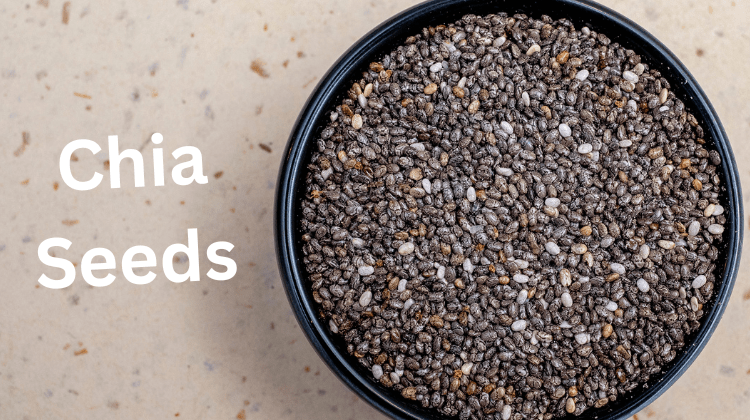Flax seeds, often called linseeds, are tiny, golden or brown seeds that pack a surprisingly powerful nutritional punch. These seeds are one of the richest plant-based sources of omega-3 fatty acids, especially alpha-linolenic acid (ALA), which plays a vital role in maintaining healthy skin and overall wellness. They are also loaded with lignans—a type of antioxidant—as well as vitamin E, fiber, and essential minerals such as magnesium, phosphorus, and selenium.
Over the past decade, flax seeds have become increasingly popular, not just among health-conscious eaters but also in the beauty and skincare world. Their anti-inflammatory, antioxidant, and hydrating properties have made them a natural go-to for people seeking clear, radiant, and youthful-looking skin. From smoothies to skincare masks, flax seeds are making their way into daily routines thanks to their proven nutritional benefits and versatility.
While most people know flax seeds as a heart-healthy superfood, what’s often overlooked is how their nutrient profile translates into skin-specific advantages. In the following sections, we’ll explore how adding flax seeds to your diet—or even your skincare regimen—can help keep your skin glowing, hydrated, and protected from premature aging.
What Makes Flax Seeds Good for Skin?
Flax seeds are more than just a healthy snack—they are a skin-loving powerhouse packed with nutrients that work on a cellular level to keep your skin youthful, smooth, and resilient. Here’s a closer look at the key components that make flax seeds so beneficial for skin health.
Rich in Omega-3 Fatty Acids
One of the standout nutrients in flax seeds is alpha-linolenic acid (ALA), a plant-based omega-3 fatty acid. Omega-3s help strengthen the skin’s lipid barrier, which reduces water loss and keeps the skin hydrated and supple. They also support skin cell regeneration, making them beneficial for repairing damaged skin and improving overall skin texture.
High Antioxidant Content (Lignans & Vitamin E)
Flax seeds are one of the richest sources of lignans, plant compounds with powerful antioxidant properties. These antioxidants fight free radical damage—a major cause of premature aging, fine lines, and dull skin. Alongside lignans, vitamin E in flax seeds nourishes the skin, boosts natural radiance, and offers protection against environmental stressors such as pollution and UV rays.
Anti-Inflammatory Properties
Chronic inflammation is linked to many skin concerns, including acne, redness, eczema, and premature aging. Flax seeds’ omega-3 fatty acids, combined with their antioxidants, work to calm inflammation, soothe irritation, and even out skin tone. Regular consumption or topical use can help reduce flare-ups and keep the skin looking healthy and calm.
Hydration and Barrier-Supporting Nutrients
Flax seeds contain mucilage, a natural plant gum that helps lock in moisture when applied topically and supports hydration from within when consumed. Additionally, their healthy fats strengthen the skin’s barrier function, which helps protect against dryness, sensitivity, and external irritants.
Top Skin Benefits of Flax Seeds
Flax seeds are not just a superfood for your heart and digestion—they’re also a natural skin enhancer. Packed with omega-3 fatty acids, antioxidants, and skin-supportive compounds, they target multiple skin concerns at once. Here’s how they can transform your skin’s health and appearance.
- Helps Reduce Skin Inflammation
Skin inflammation can manifest as acne, redness, irritation, or flare-ups of conditions like eczema and psoriasis. Flax seeds, being rich in omega-3 fatty acids, work to calm this inflammation at a cellular level. Omega-3s reduce the production of inflammatory compounds, helping soothe irritated skin and restore an even tone. Regular consumption can lead to fewer breakouts, less redness, and an overall calmer complexion.
- Promotes Hydrated and Soft Skin
One of the key benefits of flax seeds is their ability to lock in moisture. The mucilage content in flax seeds forms a protective film over the skin when used topically, while their healthy fats work internally to maintain hydration. This dual action helps improve skin softness, combat dryness, and keep the skin plump. Additionally, omega-3s reinforce the skin barrier function, making it more resistant to environmental stressors that cause moisture loss.
- Slows Down Skin Aging
Aging is a natural process, but premature skin aging is often triggered by free radical damage from pollution, UV rays, and lifestyle factors. Flax seeds are loaded with lignans and vitamin E, both of which act as potent antioxidants that neutralize these free radicals. This protection helps minimize fine lines, wrinkles, and dullness while promoting a healthy glow. Over time, regular intake can lead to smoother, more youthful-looking skin.
- Improves Skin Elasticity and Firmness
Loss of skin elasticity leads to sagging and an aged appearance. Flax seeds contribute to collagen preservation—the protein responsible for keeping skin firm and structured. Omega-3s support collagen production by reducing inflammation and enhancing nutrient delivery to skin cells. This results in skin that feels firmer, more elastic, and less prone to sagging.
- Supports Clearer Skin
For those struggling with oily or acne-prone skin, flax seeds can help balance sebum production. Excess oil often clogs pores, leading to blackheads, whiteheads, and breakouts. The anti-inflammatory compounds and antioxidants in flax seeds reduce pore congestion, while their healthy fats keep the skin nourished without triggering excess oil. This balance helps promote a clear, blemish-free complexion over time.
How to Use Flax Seeds for Healthy Skin
Flax seeds are versatile and can be incorporated into your skincare routine in multiple ways—through diet, DIY masks, and even topical oils. The key is knowing how to use them correctly so you can maximize their skin-loving benefits.
Eating Flax Seeds for Skin Health
Ground Flaxseed vs. Whole Seeds
While whole flax seeds are nutritious, their hard outer shell makes them difficult for the body to fully digest, which means you may miss out on many of their skin-friendly nutrients. Ground flaxseed (also called flaxseed meal) is easier to absorb and offers better access to omega-3 fatty acids, antioxidants, and fiber.
Daily Recommended Quantity for Visible Skin Benefits
For healthy, glowing skin, 1–2 tablespoons of ground flaxseed per day is generally considered beneficial. You can add it to smoothies, yogurt, oatmeal, or salads. Consistent intake over a few weeks can lead to visible improvements in hydration, texture, and radiance.
DIY Flax Seed Face Mask
A flax seed face mask can give your skin an instant boost of hydration and glow. Here’s a simple recipe:
Ingredients:
- 1 tablespoon ground flaxseed
- 2–3 tablespoons warm water
- 1 teaspoon honey (optional, for added moisture)
Method:
Mix ground flaxseed with warm water and let it sit for 10–15 minutes until it forms a gel-like consistency.
- Add honey for extra nourishment (optional).
- Apply the mixture evenly to your face and neck.
- Leave it on for 15–20 minutes.
- Rinse off with lukewarm water and pat dry.
This mask helps hydrate, soothe, and tighten the skin, making it look fresh and rejuvenated.
Flax Seed Oil for Topical Use
Application Method and Benefits
Flax seed oil, extracted from flax seeds, is rich in omega-3 fatty acids and vitamin E. When applied topically, it can help reduce inflammation, lock in moisture, and smooth fine lines.
- Take a few drops of cold-pressed flax seed oil.
- Gently massage into clean skin, focusing on dry or irritated areas.
- Leave it on overnight or for at least 30 minutes before rinsing off.
Precautions for Sensitive Skin
- Always do a patch test before applying flax seed oil to your face to avoid allergic reactions.
- If you have acne-prone skin, use sparingly and monitor for breakouts, as oils can sometimes clog pores in sensitive individuals.
- Choose pure, cold-pressed flax seed oil without additives for best results.
Additional Tips for Getting the Most Skin Benefits
Flax seeds work best for skin health when used as part of a holistic skincare and nutrition routine. Combining them with the right lifestyle habits and complementary foods can help you see faster, longer-lasting results.
Pair with Vitamin C-Rich Foods
Vitamin C plays a crucial role in collagen production, which keeps your skin firm and youthful. Pairing flax seeds with foods like oranges, strawberries, bell peppers, or kiwi can enhance collagen synthesis and maximize the anti-aging benefits of flax seed nutrients. For example, adding ground flaxseed to a citrus smoothie can be a skin-boosting breakfast option.
Stay Hydrated
Flax seeds help lock in moisture, but your skin still needs adequate water intake to stay hydrated from within. Aim for 8–10 glasses of water per day, and include hydrating foods like cucumbers and watermelon to complement flax seeds’ moisture-retaining effects.
Use Both Internal and External Application
For the best results, combine dietary intake of flax seeds with topical treatments like flax seed masks or flax seed oil. This double approach ensures your skin is nourished both from the inside and outside, helping improve texture, hydration, and elasticity.
Choose Fresh, Quality Flax Seeds
Flax seeds contain delicate oils that can spoil if not stored properly. Always store them in an airtight container in a cool, dark place—or refrigerate ground flaxseed—to prevent nutrient loss. Fresh flax seeds will deliver stronger skin benefits compared to stale ones.
Be Consistent and Patient
Skin transformation doesn’t happen overnight. It typically takes 4–6 weeks of consistent use to see noticeable improvements in hydration, glow, and texture. The key is making flax seeds a regular part of your daily diet and skincare routine.
Possible Side Effects and Precautions
While flax seeds are generally safe and beneficial for skin health, it’s important to be aware of potential side effects and follow best practices for safe use. Overconsumption or allergic reactions can sometimes offset their benefits, so moderation and mindfulness are key.
Allergic Reactions
Although rare, some people may experience allergic reactions to flax seeds or flax seed oil. Symptoms can include itching, swelling, redness, or rashes on the skin. In severe cases, allergic reactions may cause difficulty breathing or digestive discomfort. If you notice any unusual symptoms after consuming or applying flax seeds, discontinue use and seek medical advice.
Overconsumption Risks
Eating too many flax seeds can lead to digestive issues such as bloating, gas, or diarrhea due to their high fiber content. Additionally, excessive intake of flax seed oil may contribute to an imbalance in omega-3 to omega-6 ratios, which could affect overall health. For most adults, 1–2 tablespoons of ground flaxseed per day or 1 teaspoon of flax seed oil is sufficient for skin benefits without unwanted side effects.
Best Practices for Safe Use
- Introduce gradually: Start with small amounts and increase slowly to allow your body to adjust.
- Stay hydrated: Flax seeds absorb water, so drinking enough fluids will help prevent digestive discomfort.
- Choose quality products: Opt for fresh, organic, and cold-pressed flax seed oil or whole seeds to avoid contamination and nutrient loss.
- Do a patch test: Before applying flax seed oil or masks to your face, test a small area on your arm to check for sensitivity.
- Consult your doctor: If you are pregnant, breastfeeding, or taking medications (especially blood thinners or hormone treatments), consult a healthcare professional before adding flax seeds to your diet in large amounts.
Conclusion
Flax seeds may be small in size, but their skin-nourishing potential is immense. Rich in omega-3 fatty acids, antioxidants, and anti-inflammatory compounds, they work on multiple levels—hydrating the skin, calming irritation, slowing down premature aging, improving elasticity, and promoting a clearer complexion.
Consumed daily in smoothies, sprinkled over meals, or applied topically as masks and oils, flax seeds offer a natural, holistic approach to skincare. Their nutrient profile supports both inner health and outer beauty, making them a valuable addition to any skincare and wellness routine.
By incorporating flax seeds consistently—in your diet for long-term nourishment and in your skincare for targeted results—you can enjoy healthier, softer, and more radiant skin without relying solely on synthetic products. The key is patience, quality, and a balanced approach, allowing nature’s goodness to transform your skin from the inside out.
FAQs About Flax Seeds
Can flax seeds make skin glow?
Yes. Flax seeds are rich in omega-3 fatty acids, antioxidants, and vitamin E, which nourish the skin from within, improve hydration, and protect against environmental damage. This combination promotes a healthy glow and smoother skin texture over time.
How to make flax seed gel for skin?
To make flax seed gel:
Add 2 tablespoons of whole flax seeds to 1 cup of water in a saucepan.
Boil on medium heat for 7–10 minutes, stirring occasionally, until the water thickens into a gel-like consistency.
Strain using a fine mesh or cheesecloth while warm.
Let it cool, then apply to your face as a hydrating mask for 15–20 minutes before rinsing.
Flax seed gel is excellent for tightening pores, soothing irritation, and adding instant hydration.Is flaxseed good for dry skin?
Yes. Flax seeds contain healthy fats and mucilage that lock in moisture and strengthen the skin’s barrier, preventing dryness. Consuming flax seeds regularly and applying flax seed oil topically can help restore softness and reduce flakiness in dry skin.
How long does it take to see skin benefits from flax seeds?
Most people notice visible improvements in hydration, smoothness, and glow within 4–6 weeks of regular use, either through diet or topical application. Consistency is key for lasting results.
Can flax seeds help with acne?
Yes. The anti-inflammatory and oil-balancing properties of flax seeds help reduce acne flare-ups, calm redness, and prevent clogged pores. Omega-3 fatty acids also support skin healing, reducing post-acne marks over time.
Which is better for skin — flax seeds or flaxseed oil?
Both offer skin benefits, but they work differently. Flax seeds provide fiber, lignans, and healthy fats that nourish skin from the inside, while flax seed oil offers concentrated omega-3s for faster hydration and inflammation relief when applied topically. For best results, combine both in your routine.



